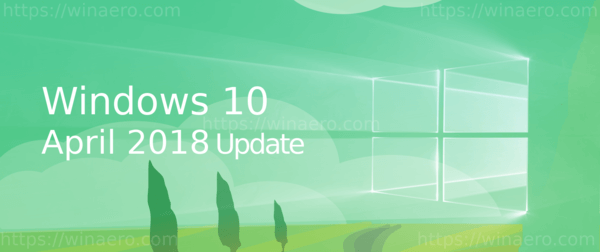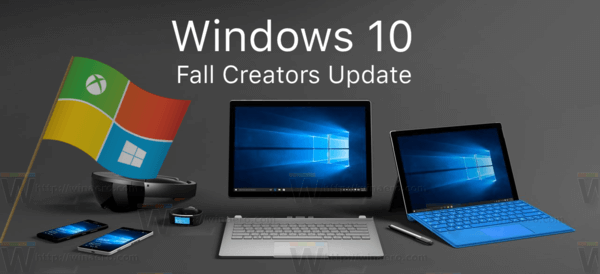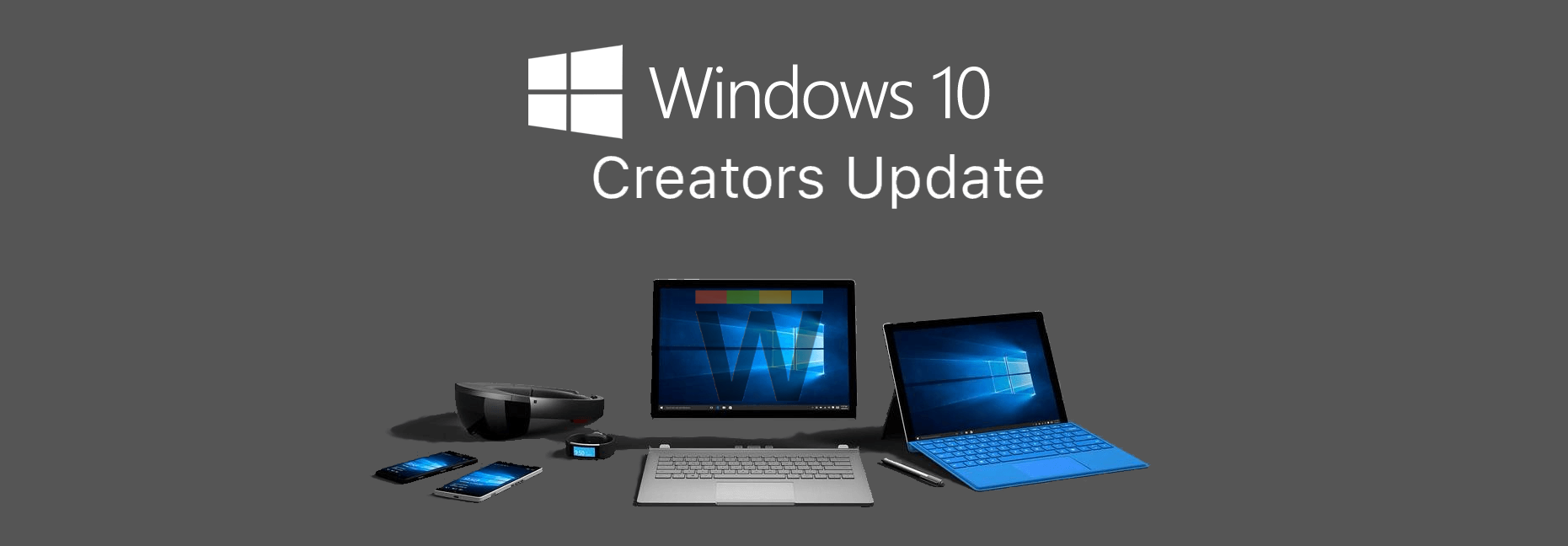Microsoft released a set of cumulative updates for a number of supported Windows 10 versions. Here is the list of updates with their change logs.
Advertisеment
The updates do not include any new features, but they include bug fixes and improvements. They are for PCs only. The following updates were released.
Windows 10 April 2018 Update, build KB4343909 (OS Build 17134.228)

- Provides protections against a new speculative execution side-channel vulnerability known as L1 Terminal Fault (L1TF) that affects Intel® Core® processors and Intel® Xeon® processors (CVE-2018-3620 and CVE-2018-3646). Make sure previous OS protections against Spectre Variant 2 and Meltdown vulnerabilities are enabled using the registry settings outlined in the Windows Client and Windows Server guidance KB articles. (These registry settings are enabled by default for Windows Client OS editions, but disabled by default for Windows Server OS editions.)
- Addresses an issue that causes high CPU usage that results in performance degradation on some systems with Family 15h and 16h AMD processors. This issue occurs after installing the June 2018 or July 2018 Windows updates from Microsoft and the AMD microcode updates that address Spectre Variant 2 (CVE-2017-5715 – Branch Target Injection).
- Addresses an issue that prevents apps from receiving mesh updates after resuming. This issue occurs for apps that use Spatial Mapping mesh data and participate in the Sleep or Resume cycle.
- Ensures that Internet Explorer and Microsoft Edge support the preload="none" tag.
- Addresses an issue that prevents some applications running on HoloLens, such as Remote Assistance, from authenticating after upgrading from Windows 10, version 1607, to Windows 10, version 1803.
- Addresses an issue that significantly reduced battery life after upgrading to Windows 10, version 1803.
- Addresses an issue that causes Device Guard to block some ieframe.dll class IDs after installing the May 2018 Cumulative Update.
- Addresses a vulnerability related to the Export-Modulemember() function when used with a wildcard (*) and a dot-sourcing script. After installing this update, existing modules on devices that have Device Guard enabled will intentionally fail. The exception error is “This module uses the dot-source operator while exporting functions using wildcard characters, and this is disallowed when the system is under application verification enforcement.” For more information, see https://portal.msrc.microsoft.com/en-US/security-guidance/advisory/CVE-2018-8200 and https://aka.ms/PSModuleFunctionExport.
- Addresses an issue that was introduced in the July 2018 .NET Framework update. Applications that rely on COM components were failing to load or run correctly because of “access denied,” “class not registered,” or “internal failure occurred for unknown reasons” errors.
- Security updates to Windows Server.
Windows 10 Fall Creators Update, KB4343897 (OS Build 16299.611)

- Provides protections against a new speculative execution side-channel vulnerability known as L1 Terminal Fault (L1TF) that affects Intel® Core® processors and Intel® Xeon® processors (CVE-2018-3620 and CVE-2018-3646). Make sure previous OS protections against Spectre Variant 2 and Meltdown vulnerabilities are enabled using the registry settings outlined in the Windows Client and Windows Server guidance KB articles. (These registry settings are enabled by default for Windows Client OS editions, but disabled by default for Windows Server OS editions.)
- Addresses an issue that causes high CPU usage that results in performance degradation on some systems with Family 15h and 16h AMD processors. This issue occurs after installing the June 2018 or July 2018 Windows updates from Microsoft and the AMD microcode updates that address Spectre Variant 2 (CVE-2017-5715 – Branch Target Injection).
- Updates support for the draft version of the Token Binding protocol v0.16.
- Addresses an issue that causes Device Guard to block some ieframe.dll class IDs after the May 2018 Cumulative Update is installed.
- Ensures that Internet Explorer and Microsoft Edge support the preload="none" tag.
- Addresses an issue that displays “AzureAD” as the default domain on the sign-in screen after installing the July 24, 2018 update on a Hybrid Azure AD-joined machine. As a result, users may fail to sign in in Hybrid Azure AD-joined scenarios when users provide only their username and password.
- Addresses an issue that adds additional spaces to content that's copied from Internet Explorer to other apps.
- Addresses a vulnerability related to the Export-Modulemember() function when used with a wildcard (*) and a dot-sourcing script. After installing this update, existing modules on devices that have Device Guard enabled will intentionally fail. The exception error is “This module uses the dot-source operator while exporting functions using wildcard characters, and this is disallowed when the system is under application verification enforcement”. For more information, see https://portal.msrc.microsoft.com/en-US/security-guidance/advisory/CVE-2018-8200 and https://aka.ms/PSModuleFunctionExport.
- Security updates to Windows Server.
Windows 10 Creators Update, KB4343885 (OS Build 15063.1266)

Provides protections against a new speculative execution side-channel vulnerability known as L1 Terminal Fault (L1TF) that affects Intel® Core® processors and Intel® Xeon® processors (CVE-2018-3620 and CVE-2018-3646). Make sure previous OS protections against Spectre Variant 2 and Meltdown vulnerabilities are enabled using the registry settings outlined in the Windows Client guidance KB article. (These registry settings are enabled by default for Windows Client OS editions.)
- Addresses an issue that causes Internet Explorer to stop working for certain websites.
- Updates support for the draft version of the Token Binding protocol v0.16.
- Addresses an issue that causes Device Guard to block some ieframe.dll class IDs after installing the May 2018 Cumulative Update.
- Ensures that Internet Explorer and Microsoft Edge support the preload="none" tag.
- Addresses a vulnerability related to the Export-Modulemember() function when used with a wildcard (*) and a dot-sourcing script. After installing this update, existing modules on devices that have Device Guard enabled will intentionally fail. The exception error is “This module uses the dot-source operator while exporting functions using wildcard characters, and this is disallowed when the system is under application verification enforcement”. For more information, see https://portal.msrc.microsoft.com/en-US/security-guidance/advisory/CVE-2018-8200 and https://aka.ms/PSModuleFunctionExport.
- Security updates to Windows Server.
You can get these updates using Windows Update in Settings. Alternatively, you can get them from the Microsoft Update Catalog and install them offline.
Source: Microsoft.
Support us
Winaero greatly relies on your support. You can help the site keep bringing you interesting and useful content and software by using these options:
